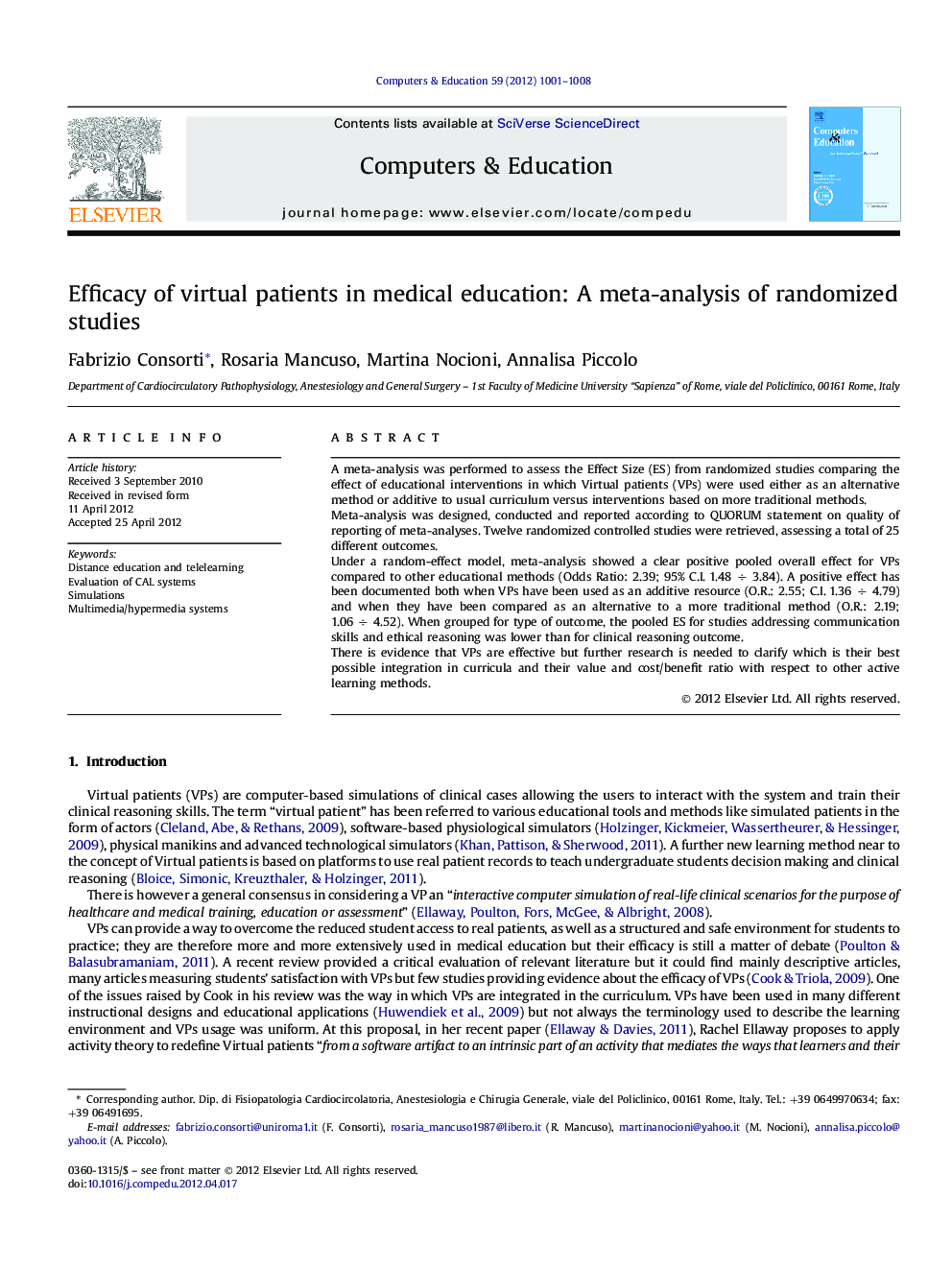| Article ID | Journal | Published Year | Pages | File Type |
|---|---|---|---|---|
| 348855 | Computers & Education | 2012 | 8 Pages |
A meta-analysis was performed to assess the Effect Size (ES) from randomized studies comparing the effect of educational interventions in which Virtual patients (VPs) were used either as an alternative method or additive to usual curriculum versus interventions based on more traditional methods.Meta-analysis was designed, conducted and reported according to QUORUM statement on quality of reporting of meta-analyses. Twelve randomized controlled studies were retrieved, assessing a total of 25 different outcomes.Under a random-effect model, meta-analysis showed a clear positive pooled overall effect for VPs compared to other educational methods (Odds Ratio: 2.39; 95% C.I. 1.48 ÷ 3.84). A positive effect has been documented both when VPs have been used as an additive resource (O.R.: 2.55; C.I. 1.36 ÷ 4.79) and when they have been compared as an alternative to a more traditional method (O.R.: 2.19; 1.06 ÷ 4.52). When grouped for type of outcome, the pooled ES for studies addressing communication skills and ethical reasoning was lower than for clinical reasoning outcome.There is evidence that VPs are effective but further research is needed to clarify which is their best possible integration in curricula and their value and cost/benefit ratio with respect to other active learning methods.
► Virtual patients (VPs) are computer-based simulations of clinical cases. ► VPs show a positive educational effect compared to more traditional methods. ► The effect is greater for clinical reasoning than for communication or ethical skills. ► A critical issue is the way in which VPs are integrated in the curriculum.
